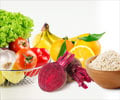Eat Weight Disord 2020 Feb 01
Eating self-efficacy: validation of a new brief scale.
Lombardo C, Cerolini S, Alivernini F, Ballesio A, Violani C, Fernandes M, Lucidi F
Eating self-efficacy (ESE) is the belief in one's ability to self-regulate eating. Social and emotional situations may be differently challenging depe ...
Read More
Source: PubMed
Allergol Immunopathol (Madr) 2020 Jan 29
The frequency of cross-reactivity with various avian eggs among children with hen's egg allergy using skin prick test results: fewer sensitizations with pigeon and goose egg.
Moghtaderi M, Nabavizadeh SH, Hosseini Teshnizi S
A high rate of cross-reactivity has been reported between the specific proteins of hen's egg with proteins of various avian eggs by quantitative immun ...
Read More
Source: PubMed
Adv Neurobiol
Reality-Based Technologies for Children with Autism Spectrum Disorder: A Recommendation for Food Intake Intervention.
Banire B, Khowaja K, Mansoor B, Qaraqe M, Al Thani D
Food selectivity by children with autism spectrum disorder (ASD) is relatively high as compared to typical children and consequently puts them at risk ...
Read More
Source: PubMed
Adv Neurobiol
Seeds.
Mohammed SG, Qoronfleh MW
A wide variety of plant species provide edible seeds. Seeds are the dominant source of human calories and protein. The most important and popular seed ...
Read More
Source: PubMed
Appl. Environ. Microbiol. 2020 Jan 31
Competitive exclusion is a major bioprotective mechanism of lactobacilli against fungal spoilage in fermented milk products.
Siedler S, Rau MH, Bidstrup S, Vento JM, Aunsbjerg SD, Bosma EF, McNair LM, Beisel CL, Neves AR
A prominent feature of lactic acid bacteria (LAB) is their ability to inhibit growth of spoilage organisms in food, but hitherto research efforts to e ...
Read More
Source: PubMed









